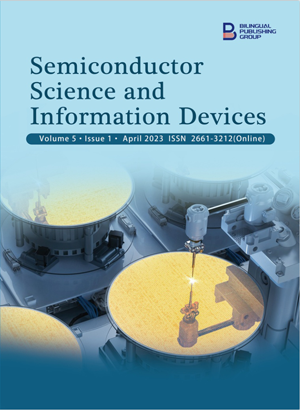Cooperative Relaying in a Three User Downlink NOMA System Using Dynamic Power Allocation
DOI:
https://doi.org/10.30564/ssid.v5i1.6028Abstract
Non-orthogonal multiple access (NOMA) represents the latest addition to the array of multiple access techniques, enabling simultaneous servicing of multiple users within a singular resource block in terms of time, frequency, and code. A typical NOMA configuration comprises a base station along with proximate and distant users. The proximity users experience more favorable channel conditions in contrast to distant users, resulting in a compromised performance for the latter due to the less favorable channel conditions. When cooperative communication is integrated with NOMA, the overall system performance, including spectral efficiency and capacity, is further elevated. This study introduces a cooperative NOMA setup in the downlink, involving three users, and employs dynamic power allocation (DPA). Within this framework, User 2 acts as a relay, functioning under the decode-and-forward protocol, forwarding signals to both User 1 and User 3. This arrangement aims to bolster the performance of the user positioned farthest from the base station, who is adversely affected by weaker channel conditions. Theoretical and simulation outcomes reveal enhancements within the system’s performance.
Keywords:
NOMA; Cooperative NOMA; Decode and forward; Dynamic power allocationReferences
[1] Ajmal, M., Zeeshan, M. (editors), 2021. A novel hybrid af/df cooperative communication scheme for power domain noma. 2021 IEEE 15th International Symposium on Applied Computational Intelligence and Informatics (SACI); 2021 May 19-21; Timisoara, Romania. New York: IEEE. p. 000055-000060. DOI: https://doi.org/10.1109/SACI51354.2021.9465621
[2] Mabumba, M., Tembo, S., 2023. Dynamic power allocation as a way of improving the performance of users in Downlink Non-Orthogonal Multiple Access (NOMA) for 5G communications. International Journal of Innovative, Science and Research Technology. 8(5).
[3] Su, W., Sadek, A.K., Ray Liu, K.J., 2008. Cooperative communication protocols in wireless networks: Performance analysis and optimum power allocation. Wireless Personal Communications. 44, 181-217. DOI: https://doi.org/10.1007/s11277-007-9359-z
[4] Ligwa, M., Balyan, V., 2022. A comprehensive survey of NOMA-based cooperative communication studies for 5G implementation. Expert Clouds and Applications. 619-629. DOI: https://doi.org/10.1007/978-981-16-2126-0_49
[5] Ghous, M., Hassan, A.K., Abbas, Z.H., et al., 2022. Cooperative power-domain NOMA systems: An overview. Sensors. 22(24), 9652. DOI: https://doi.org/10.3390/s22249652
[6] Duan, W., Jiang, X.Q., Wen, M., et al., 2018. Two-stage superposed transmission for cooperative NOMA systems. IEEE Access. 6, 3920-3931. DOI: https://doi.org/10.1109/ACCESS.2017.2789193
[7] Mabumba, M., Tembo, S., Phiri, L., 2023. Performance study of Downlink users in Non-orthogonal Multiple Access (NOMA) for 5G communications. Global Journal of Computer Science Technology (E). 23(1), 1-8.
[8] Wan, D., Wen, M., Ji, F., et al., 2018. Non-orthogonal multiple access for cooperative communications: Challenges, opportunities, and trends. IEEE Wireless Communications. 25(2), 109-117. DOI: https://doi.org/10.1109/MWC.2018.1700134
[9] Guo, W., Qureshi, N.M.F., Siddiqui, I.F., et al., 2022. Cooperative communication resource allocation strategies for 5G and beyond networks: A review of architecture, challenges and opportunities. Journal of King Saud University-Computer and Information Sciences. 34(10), 8054-8078. DOI: https://doi.org/10.1016/j.jksuci.2022.07.019
[10] Yang, Z., Ding, Z., Wu, Y., et al., 2017. Novel relay selection strategies for cooperative NOMA. IEEE Transactions on Vehicular Technology. 66(11), 10114-10123. DOI: https://doi.org/10.1109/TVT.2017.2752264
[11] Kader, M.F., Shahab, M.B., Shin, S.Y., 2017. Exploiting non-orthogonal multiple access in cooperative relay sharing. IEEE Communications Letters. 21(5), 1159-1162. DOI: https://doi.org/10.1109/LCOMM.2017.2653777
Downloads
How to Cite
Issue
Article Type
License
Copyright © 2023 Mwewa Mabumba, Simon Tembo, Lukumba Phiri

This is an open access article under the Creative Commons Attribution-NonCommercial 4.0 International (CC BY-NC 4.0) License.




 Aims and Scope
Aims and Scope Mwewa Mabumba
Mwewa Mabumba






